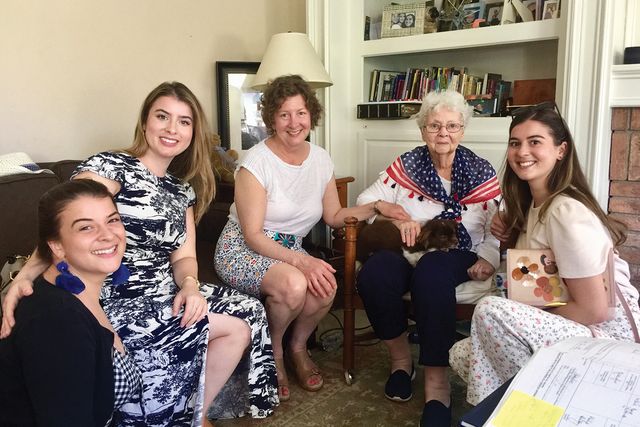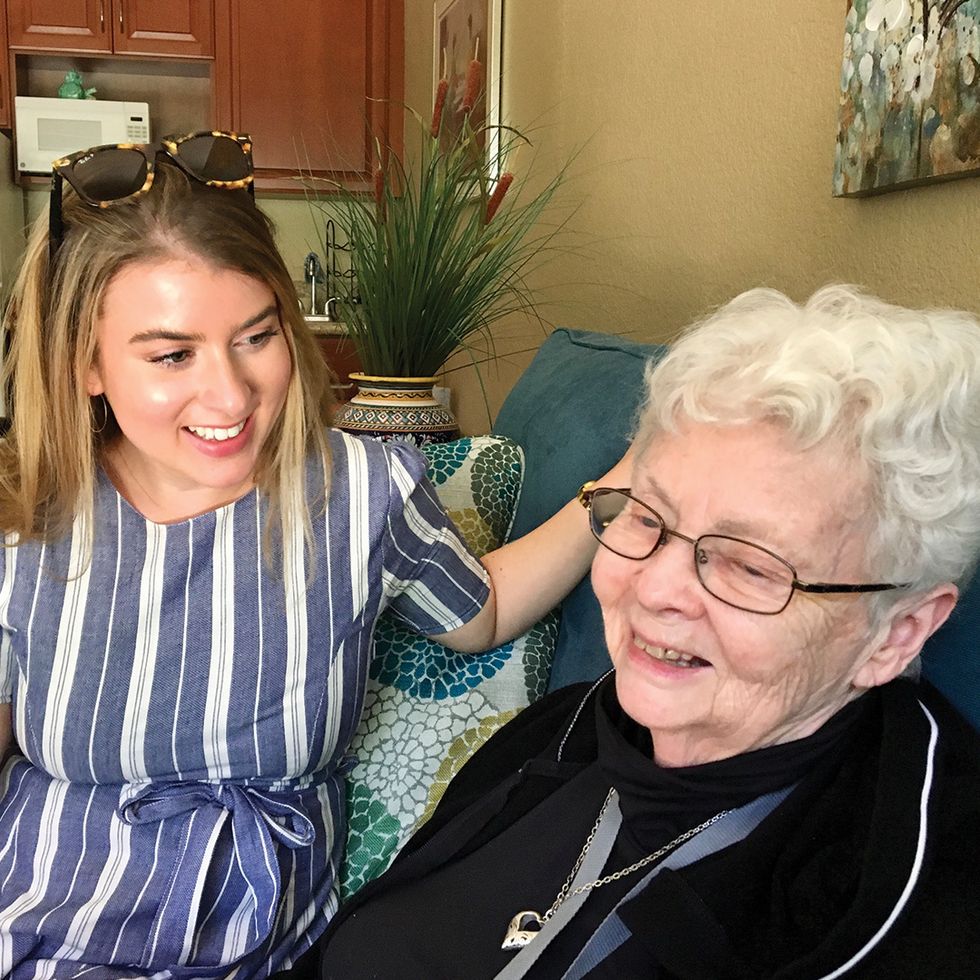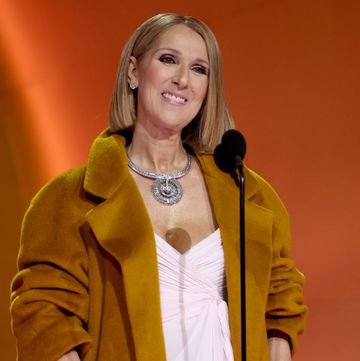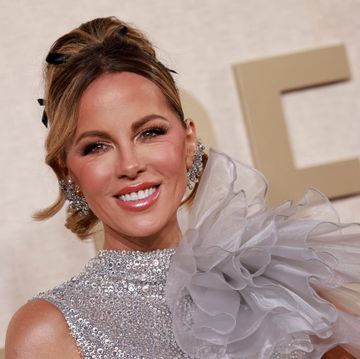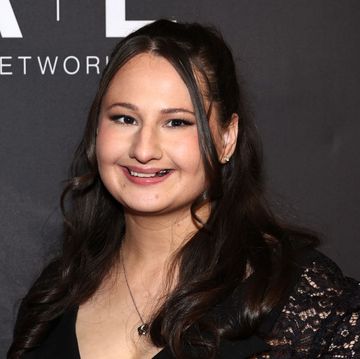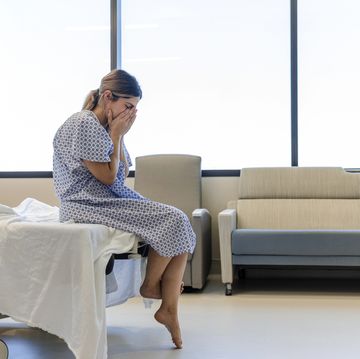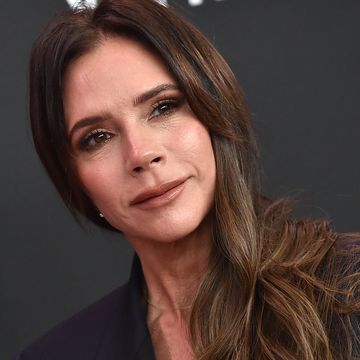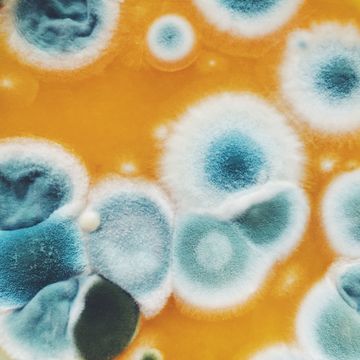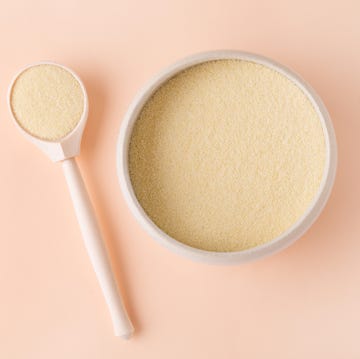I signed up for 23andMe to learn a little bit more about my heritage and genetic makeup—like pretty much everyone who signs up for it does.
I figured the DNA testing service—which provides users with information about their ancestry and genetic health risks, among other things—might tell me I was a little more Irish, French, British, German than I thought.
The thing—or should I say person—I didn't expect to find: Rosemary, my grandmother. The woman who gave my mother up for adoption 60 years ago.
I had ordered two 23andMe kits in April for my boyfriend and me, out of pure curiosity.
When the kit arrived in mid-May, we spit into our designated tubes and mailed them to the lab for testing.
Weeks later, when our results arrived, I was told something pretty unexpected: I had roots in Spain and Venezuela—roots that, at 31 years old, I’d never heard about.
Immediately, I thought about my mom, Lisa, realizing that these roots had to have come from her biological family (her adoptive family was Irish Catholic). I hesitated to tell her, unsure if she’d want to know about that piece of her (and us). She was 60, after all, and I didn’t know if she would want to re-open that chapter of her life while she was enjoying retirement, her empty nest, and traveling.
Turns out, my mom was just as curious about my 23andMe results as I was.
When I asked if she wanted to know my results, she said she did—so I told her about my Spanish and Venezuelan roots.
Skeptical, she replied, “Are you sure? How accurate is this?” I assured her I believed it was, telling her about the spit tube I’d sealed and sent to the lab. In the next few days, she, my two sisters, and I chatted about how cool it was that we’d discovered a little more about where we came from.
We had no idea how much more we had to learn.
A week later, I received an email from 23andMe that read, “Hannah, discover your DNA relatives.”
I clicked, fully expecting to see a family tree with names of fourth cousins, twice removed, if that.
Instead, I saw a photo of a woman who looked exactly like my mother—but about 20 years older. “Maternal grandmother” read the caption under her photo, next to her name: Rosemary. It was my mother’s biological mother. Few moments literally take your breath away. This was one of them.
I hid in a closet at work to breathe and try to think straight. I didn’t know what I would possibly tell my mom. She was raised by incredible parents who had passed away. I knew that she had gone looking for her biological mom when she was in college, but the courts denied her request, citing the closed adoption.
She was, of course, heartbroken then, but she had since come to peace with never knowing her birth mother. As a spiritual person, she believed that she ended up exactly where she was supposed to be, in a family that was meant to be hers.
Now, I hadn’t just opened a new chapter by telling her about her heritage. I had a photo of her biological mother: I’d opened a whole new book.
Then, I had another thought: “She’s looking for my mom.” Rosemary was an older woman, probably nearing 80, I estimated. She wouldn’t have ordered and completed this DNA kit if she wasn’t hoping, even slightly, that she’d find her daughter.
Underneath Rosemary’s photo was another: my biological aunt’s. I gathered that Rosemary had another daughter after my mom, which meant that my mom had a biological sister. The site said her name was Judith. I wondered if she even knew my mom existed.
I decided I had to tell my mom—I wanted to give her the choice of reaching out to Rosemary.
“I found your birth mother on 23andMe,” I told her, over the phone.
She asked if I was sure, so I sent her Rosemary’s photo and waited for her response. “You really think that looks like me?” she asked. “Mom, that is you in 20 years,” I replied. My two sisters later agreed, finding the resemblance just as striking.
I told my mom that, if she wanted, I could reach out through 23andMe. She was unsure, understandably, if her birth mother wanted to find her. “Think about whatever situation she was in when you were born,” I said to my mom. “Whether she wanted to give you up or not, she would probably really like to know that the daughter she had ended up having a really, really beautiful life.”
With that, and some moments of contemplation, my mom gave me the green light to reach out to my maternal grandmother.
I crafted a message to Rosemary, telling her my name and that I believed she was my mother's biological mother. I added that my mom was open to speaking with her and that I hoped she was open to connecting. I hit send. Then, my mom, dad, sisters, and I waited.
When we didn't hear back, questions ran through all of our heads: Does she want to meet us? Is she even still alive? I could tell, with each passing day, my mom was growing more anxious, running through more scenarios. All the while, I was feeling emotionally responsible. I brought the idea into her mind—what if it would only ever be an idea?
My dad found Rosemary's phone number online, so my mom decided to call her.
She left a voicemail, and again, we waited. We tried to reassure her that Rosemary was an older woman, and she probably wasn’t checking her phone or email nearly as often as we were.
The next day, we learned that we were right. My mom texted me, “I’m on the phone with Rosemary.” I almost fell to the ground. They were talking to each other. It was all I had wanted since I first saw her photo.
My mom called me seconds after getting off the phone with Rosemary. Her voice was light and airy as she said, “It was amazing.” So amazing that, the next day, she booked a ticket to California to meet her birth mother in person. My sisters and I, knowing we couldn’t miss this, booked our tickets, too.
During their phone call, my mom learned that Rosemary grew up in an Irish-Catholic home in Ohio and got pregnant at 19. Her mom forced her into a convent for unwed mothers, where she would give birth, in Michigan. After having my mom, she moved back to Ohio, but she wasn’t allowed tell anyone about her pregnancy—adoption was her only choice.
Rosemary went looking for my mom, just as my mom went looking for her.
When she was a baby, my mom spent sometime in an orphanage in Michigan before she was adopted. While she was there, Rosemary said she'd sneak away from her mom's house in Ohio and drive to Michigan to hold her for a few hours.
After my mom was adopted, Rosemary went back to the orphanage in search of any information on my mother's new parents, without any luck.
Weeks after they spoke for the first time, my mom, sisters, and I landed in California to meet Rosemary and Judith.
They welcomed us with open arms, told so many stories, and took even more photos. There were tears cried over time that was lost, but also in celebration of time that was gained.
I knew this experience would be special for my mom, but I never imagined the effect it would have on me, too. In the past few years, my biggest desire has been to have kids and expand my family. Then this happened, and my family has already expanded in the most unexpected way. I was finally connected to my biological matriarchal line, a line that used to end with my mother, a line that will continue with my own children.
This isn’t how every adoption story ends, but we’re so lucky that Rosemary wanted to find us as much as we wanted to find her. I’ll never forget the Facebook message she sent me after speaking to my mom. She told me that she had been hoping for so long that she would get to see her baby. And sixty years after saying goodbye, she said hello again.
